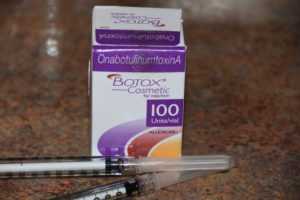
Some patients with a very square face may have a significantmasseter muscle thickening or hypertrophy. The contribution of the masseter muscle thickness to the width of the face can be determined by having the patient bite down and looking and feeling the size of the muscle. Extreme flaring or bulging is a sign of a significant contribution to facial width. Masseter muscle reduction is a commonly requested procedure in Asian ethnicities, particularly Korean, due to their inherently wider facial shapes. Compared to surgical thinning of the masseter muscle which is a very traumatic procedure with a long recovery, Botox injections offer an equal result without any of the surgical side effects.

For this cosmetic facial shaping use, the effect becomes apparent relatively quickly within a month or two. The effects will last about 6 months and repeat injections are needed to sustain the narrowing effect. It is unknown if there is a point when the effect is sustained without further treatments.
For those who suffer from facial pain due to bruxism or excessive clenching, Botox has a similar beneficial effect. It not only stops the amount of muscle spasm and clenching but it can also cause a muscle thinning effect. The injection technique is the same but slightly higher doses may be needed. While I always start with 25 units of Botox per side, optimal pain relief may require a higher dose. But start at 25 units and see what happens. Also, because the temporalis muscle may be a contributor to the clenching, injection into it with 10 units may be needed. The injection point is determined by where the patient points to a temporalis location, but it is often into the muscle just above the zygomatic arch at the anterior edge of the hairline. The duration of these masseter muscle injections approximates that of its upper facial cosmetic effects of around 4 months. Despite this shorter duration, the pain relief can be dramatic.
Dr. Barry Eppley
Indianapolis, Indiana


